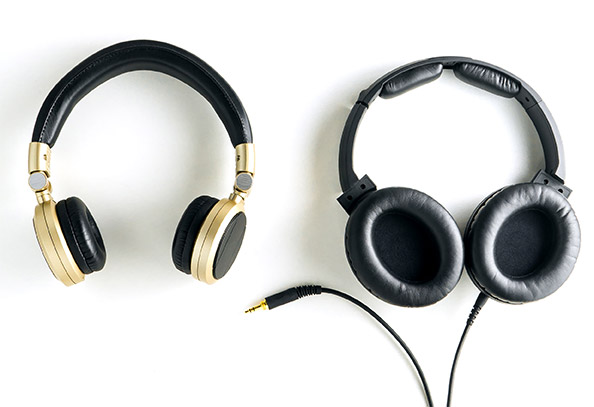The audio industry has undergone significant changes, offering consumers a basic choice: wired or wireless headphones. Both have distinct benefits and drawbacks, accommodating various priorities, listening preferences, and lifestyles. Learn more
The Wired Headphone Advantage: Purity & Reliability
The conventional option wired headphones, provide a visible and direct connection to your music source through a cable, usually a USB or 3.5mm connector. There are several substantial advantages to this direct connection:
Superior Sound Quality: Wired headphones are generally the preferred choice for music lovers and those who value crystal-clear sound. By using a physical link, the analog signal reduces interference, signal loss, and the requirement for compression, which is frequently included in wireless transmission. This produces a sound experience that is clearer, more detailed, and unaltered, particularly when using high-quality audio codecs (FLAC, WAV, etc.). Despite advancements in wireless technology, Bluetooth’s bandwidth and performance limits still fall short of those of the most significant cable connections.
Zero Latency: For video producers, musicians, and gamers, zero latency is essential. With wired headphones, there is almost no lag between the audio source and your ears. Reaction times in competitive gaming can be significantly affected by even a single millisecond of latency. Accurate audio time is crucial for musicians’ recordings and performances.
No Battery Dependency: Internal batteries and the ongoing concern about recharging are removed with wired headphones, which get their power directly from the connected device. As long as your gadget is powered on, you may listen without interruption.
More Affordable: Generally, wired headphones offer a better balance between cost and functionality. Since wired headphones don’t require the extra technology (Bluetooth chip, DAC, amplifier, battery) that wireless versions do, you may often find wired headphones with superior sound quality at a lower price point than their wireless counterparts with comparable audio capabilities.
Durability & Repairability: Even if the connection breaks, many wired headphones feature detachable cables, making replacement simple in the event of damage. In general, the internal wiring is simpler, which may make them less vulnerable to damage from drops than wireless headphones with more complex electronics.
Disadvantages:
Limited Flexibility: The primary disadvantage is the requirement to be tied to your smartphone. This limits their range of motion, making them less suitable for vigorous activities such as working out, traveling, or moving about freely while listening.
Twisted Wires: When cables are transported or stored, they may tangle, snag, or otherwise cause an annoyance.
Connectivity Issues: As smartphones increasingly eliminate the 3.5mm headphone port, users may need adapters, which add parts and potentially introduce a point of failure.
The Wireless Headphone Advantage: Purity & Reliability
Due to their unmatched mobility and simplicity, wireless headphones, which primarily use Bluetooth technology, have become increasingly popular.
Unmatched Freedom of Movement: The primary benefit is being free of wires. This enables users to move about a room, work out, travel, and more without being directly attached to their audio source.
Greater Convenience: You can control your audio without interacting with your smartphone directly, thanks to the integrated controls for volume, track skipping, and call management that are frequently included in wireless headphones. Many of them also feature clever enhancements, such as multi-device connectivity, noise reduction, and voice assistant integration.
Portability: Due to their compact size, many wireless headphones and earbuds are easily transportable and storeable.
None Twisted Cables: The annoyance of tangled cables is eliminated when there are no wires present.
Improving Sound Quality: Although wireless headphones have always lagged behind wired, improvements in digital-to-analog converters (DACs) and Bluetooth codecs (such as aptX Adaptive, LDAC, and LC3) have significantly reduced the difference in sound quality. The distinction is now minor to the majority of casual listeners.
Active Noise Cancellation (ANC): Many expensive wireless headphones incorporate this cutting-edge technology, which actively blocks out background noise to create a genuinely immersive listening experience. Although passive noise isolation can be quite effective in specific wired versions, this characteristic is less common in wired headphones.
Disadvantages:
Battery Life: Since wireless headphones utilize rechargeable batteries, they necessitate regular charging. Your listening session may end abruptly if you forget to charge them. Some over-ear headphones have a battery life of over 70 hours on a single charge, while other types have a battery life of only a few hours. High volume levels and active noise canceling are two examples of things that can drastically reduce battery life more quickly.
Concern for Time: Bluetooth still causes a slight delay (latency) between the headphones and the audio source despite significant improvements. For real-time applications like gaming, watching movies (where lip-sync problems might arise), or professional audio monitoring, this can be obvious and bothersome, even if it is frequently undetectable when listening to music.
Sound Quality Compression: Compared to an uncompressed wired signal, Bluetooth transmission inherently involves some form of audio compression, which can lead to a loss of clarity and detail, particularly for discerning audiophiles.
More Expensive: Given the additional technology required (Bluetooth chip, battery, DAC, amplifier), wireless headphones with similar sound quality are often more expensive than their connected counterparts.
Connectivity Problems: Although wireless connections are generally reliable, they may occasionally experience interference, dropouts, or trouble connecting, especially in congested wireless environments.

